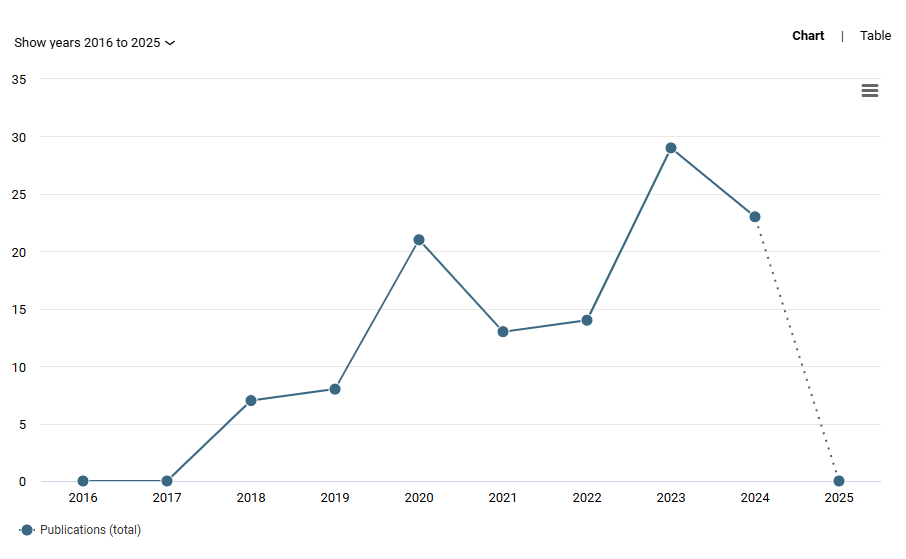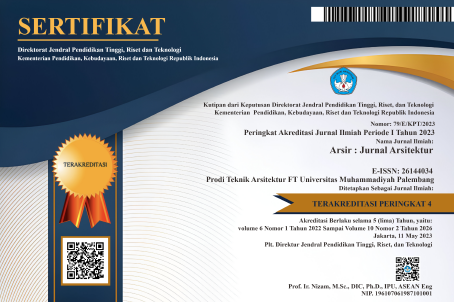Karakteristik Hunian Buruh Berpenghasilan Rendah: Pondok Boro Kampung Sumeneban Semarang
DOI:
https://doi.org/10.32502/arsir.v8i1.143Kata Kunci:
buruh, hunian, masyarakat berpenghasilan rendah, perkotaan, pondok boroAbstrak
Salah satu permasalahan di perkotaan adalah meningkatnya kebutuhan hunian. Hal ini terjadi di berbagai kota metropolitan, salah satunya di Semarang sebagai kota terbesar ke-5 di Indonesia. Dengan kebutuhan hunian, terutama bagi Masyarakat Berpenghasilan Rendah khususnya para buruh, Pondok Boro menjadi solusi bagi mereka. Tujuan dilakukan penelitian ini untuk mengetahui karakteristik hunian Pondok Boro Kampung Sumeneban, Semarang. Metode yang digunakan adalah kualitatif deskriptif, dengan menggunakan purposive sampling. Dari hasil pembahasan, skala prioritas penghuni tidak mempermasalahkan kualitas hunian, yang paling utama bagi mereka adalah sistem sewa yang murah, dan dekat dengan tempat kerja membuat Pondok Boro menjadi pilihan bagi pekerja yang merantau di kota Semarang. Dengan status kepemilikan hunian yang dikelola pihak swasta, membuat bangunan ini masih belum banyak perbaikan maupun pengembangan hunian. Dari aspek fisik bangunan terdapat perubahan fungsi bangunan yang awalnya gudang menjadi hunian buruh berpenghasilan rendah yang memiliki dua tipe, yaitu tipe kamar los dan tipe kamaran. Secara makro bangunan masih menggunakan material asli, hanya beberapa material seperti genteng dan penambahan ruang yang menyesuaikan dengan kebutuhan penghuni.
Unduhan
Diterbitkan
Cara Mengutip
Terbitan
Bagian
Lisensi
Hak Cipta (c) 2024 Fika Annisa' Sholihah, Ardhya Nareswari

Artikel ini berlisensiCreative Commons Attribution-ShareAlike 4.0 International License.
Arsir: Jurnal Arsitektur (AJA) have CC-BY-SA or an equivalent license as the optimal license for the publication, distribution, use, and reuse of scholarly work.
Authors who publish Arsir: Jurnal Arsitektur (AJA) agree to the following terms: Authors retain copyright and grant the Arsir: Jurnal Arsitektur (AJA) right of first publication with the work simultaneously licensed under a Creative Commons Attribution License (CC BY-SA 4.0) that allows others to share (copy and redistribute the material in any medium or format) and adapt (remix, transform, and build upon the material) the work for any purpose, even commercially, with an acknowledgement of the work's authorship and initial publication in Arsir: Jurnal Arsitektur (AJA). Authors are able to enter into separate, additional contractual arrangements for the non-exclusive distribution of the journal's published version of the work (e.g., post it to an institutional repository or publish it in a book), with an acknowledgement of its initial publication in Arsir: Jurnal Arsitektur (AJA). Authors are permitted and encouraged to post their work online (e.g., in institutional repositories or on their website) prior to and during the submission process, as it can lead to productive exchanges as well as earlier and greater citation of published work (see The Effect of Open Access).
![]()
Work is distributed below This work is licensed under a Creative Commons Attribution-ShareAlike 4.0 International License.




